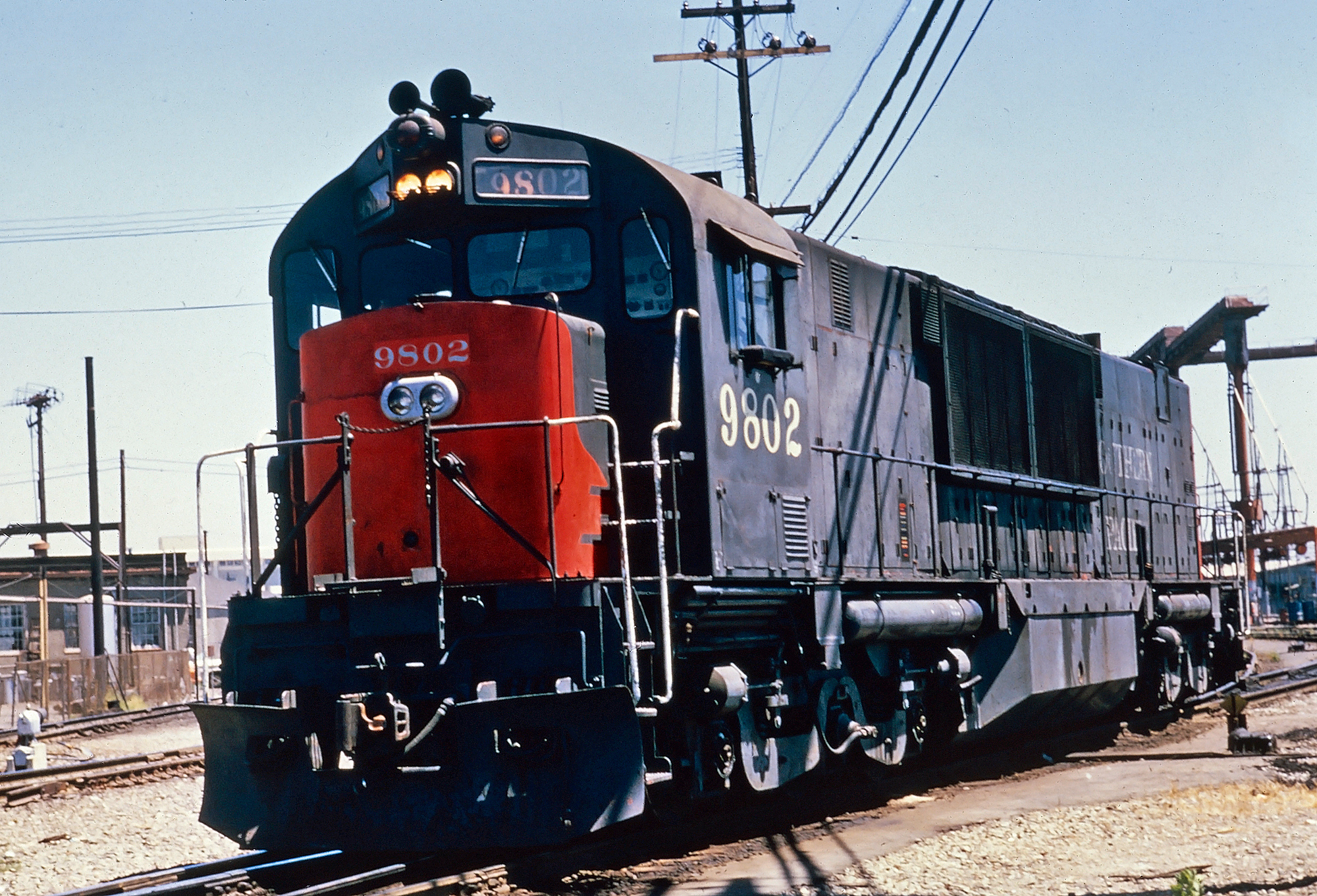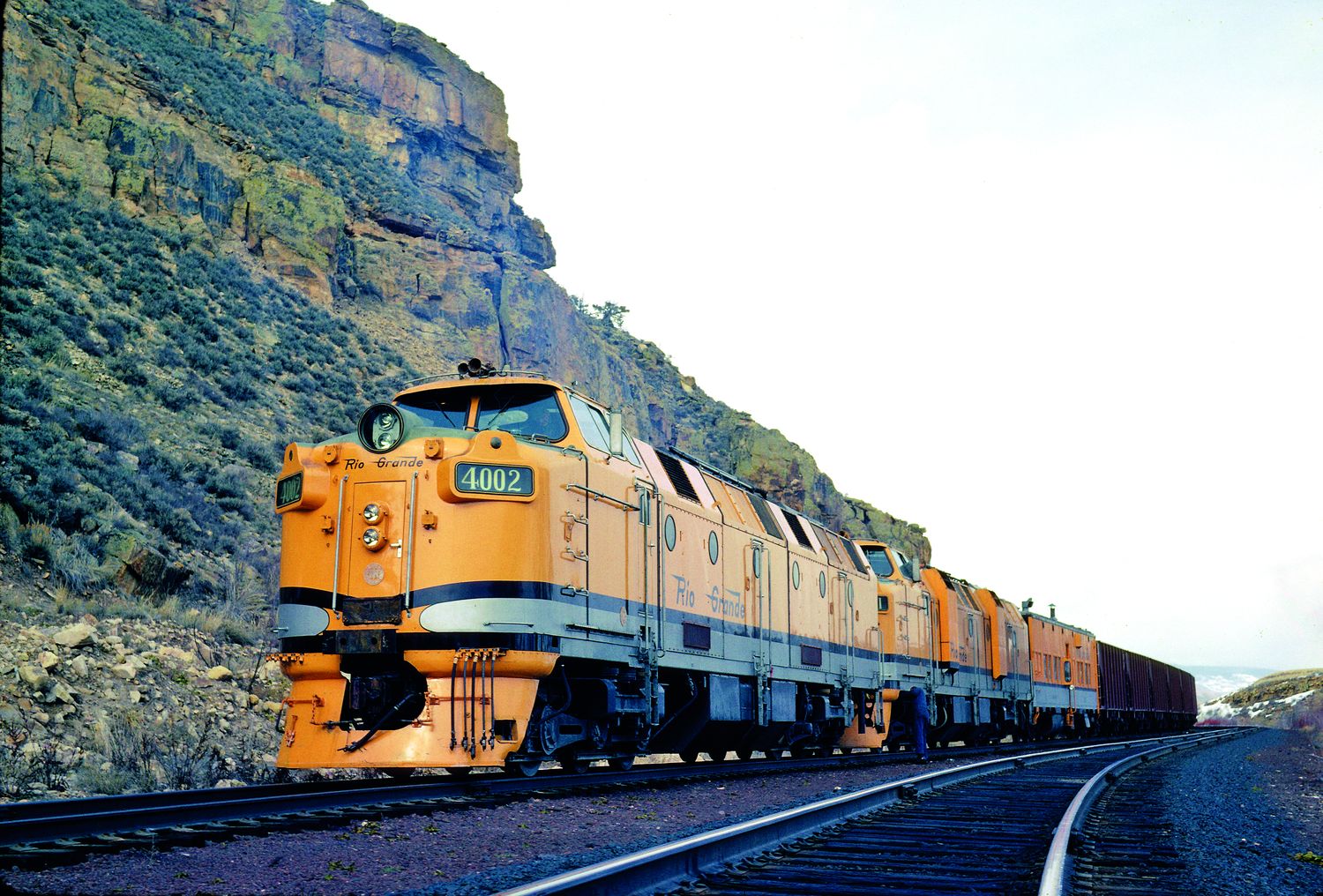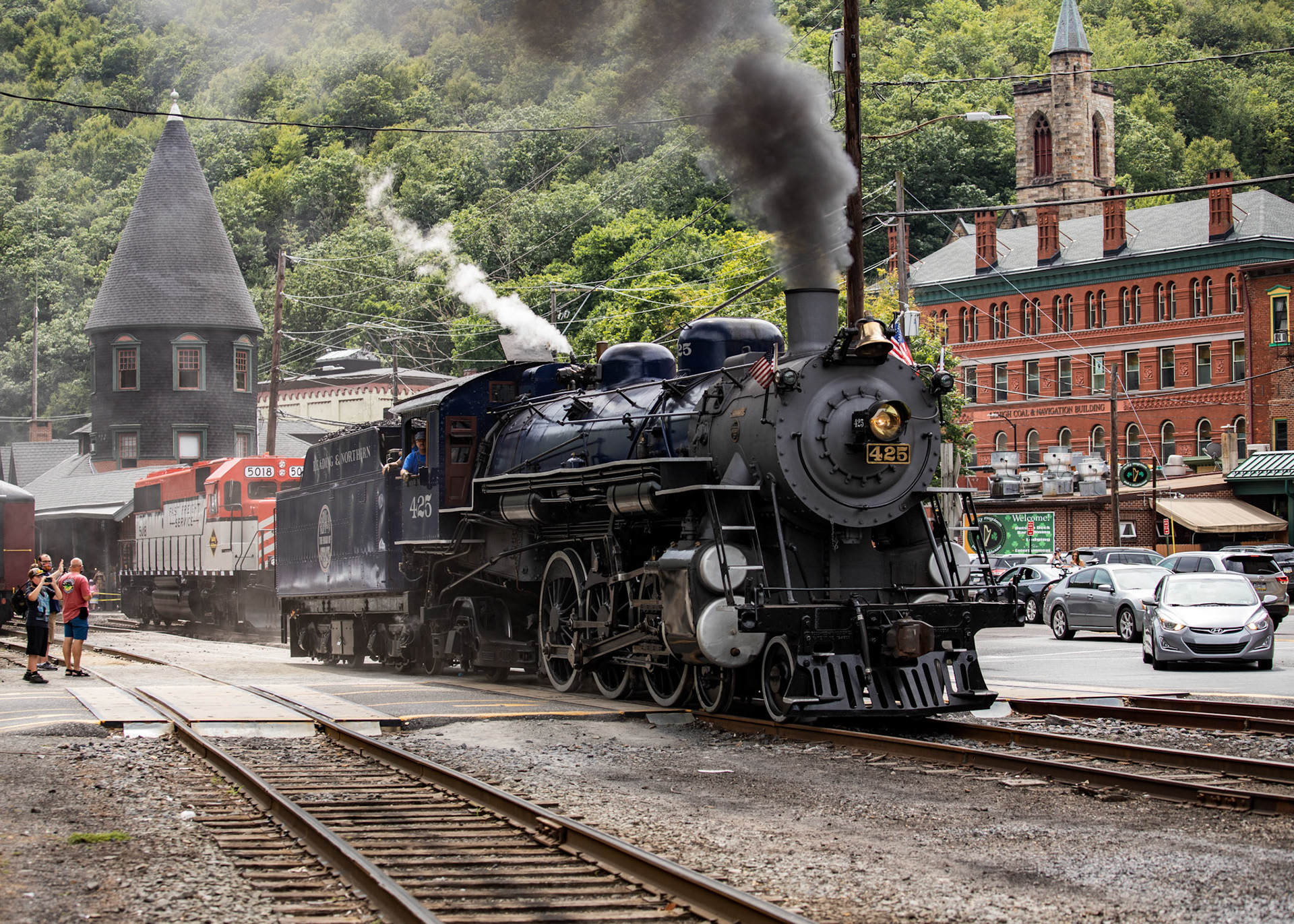SP's other big hydraulics were the Alco DH463. When SP and D&RGW started looking into the diesel-hydraulic concept in 1959, SP actually requested a proposal from Alco, since Alco and SP had had a pretty good relationship. Alco was short on cash for R&D and was watching GE start to eat into their sales with the U-boats and declined to submit a proposal. EMD and GE also refused to submit proposals, while suprisingly, both Baldwin-Lima-Hamilton and Fairbanks-Morse, who hadn't produced a locomotive in years, submitted proposals that were turned down by SP. Then in SP's second bid in 1962, EMD took a meeting and expressed polite interest in SP's further experiences with diesel-hydraulic power, while at least one GE representative was reported to be openly dismissive of the venture. It fell on Alco to leverage a tiny bit of market position, anything to turn sales around, and finally satisfy the urgings of SP as a valued client.
There was actually German involvement with Alco's resulting machine as well. Alco didn't have the R&D money to develop an all-new hydraulic drive, so they paired up with MaK, Maschinenbau Kiel, to develop the DH643. It was a pretty smart partnership: Alco could assign all the powertrain engineering to MaK, longtime successful builders of diesel-mechanical locomotives, and retain a "domestic content" advantage over the competing K-M bid by sourcing the prime movers and chassis while MaK would not have to do what their German competitor K-M had to and skip having to design and certify an entire chassis and carbody for American duty, and still win the bid.
What most U.S. observers still consider to be a "U.S." design in the Alco DH-643 is really a hybrid Euro-American. The frame and carbody were Alco, and the Tri-Mount six-axle truck were American through and through, although Alco mounted them backwards, with the farther spaced axle out towards the ends of the locomotive, in hopes of addressing some of the tracking issues that their C628/C630/C636s had. They used two Alco 251-series V12s generating 2150hp each. The hydraulic part of the powertrain was pure MaK: the transmissions were re-engineered from the same Voith L830 design that K-M used, but with improvements to bearings, case design, and other improvements that also provided sales points and bragging rights; the Alco Voith transmissions were "stronger" than their European counterparts, or so the argument went. In fact, both KM and Alco transmissions by the German firm of Voith were reliable, provided good service, and largely worked exactly as advertised: SP even said so in their closing remarks about the Hydro Program.
The K-M ML-4000s mounted the engines in the center of the carbody, with the transmissions mounted towards the ends of the locomotive. The Alco DH643 mounted the engines out towards the ends of the frame, with the radiators and transmissions mounted in the center, and then long low-angle driveshafts running out towards the end. The design resulted in a physically massive locomotive and pushed the cab far to the front, resulting in a very snub-nosed appearance (they always remind me of Droopy). The only Alco diesel bigger than the DH643 was the twin-engined, 8-axle, 5500hp C855 that they brewed up for Union Pacific.
The big advantage of the Alco was there was one less learning curve. Where the Krauss-Maffeis had the crews learning about both the Maybach prime movers and the Voith hydraulic drive, the DH643's Alco prime movers were a known quantity, so only the hydraulic drive was a curveball, and by the time the DH643s came out, the K-M prototypes had already paved the way for the Voith transmissions. The Alco's problem was it's sheer size and weight. In fact, SP was so concerned, that Alco also included alternate specs for the DH-643 as Specification DH 401, to be powered by British-licensed Paxman V-12 diesels; the resulting locomotive would have been shorter and lighter, responding to a continued concern of SP's over the unwieldy 75-foot length of the 251-motored design. Alco also had plans for a single-engine 3000hp 4-axle version and a twin-engine, 5000hp 6-axle version in the event that the diesel-hydraulic market took off
While the DH643's were outnumbered by the K-Ms by a factor of 7:1, the DH643s also outlived all of the German-built machines. A lot of that was due to those Alco prime movers that crews felt more comfortable with. They did still have the issue with lack of parts availability for the European-built hydraulic transmission. They didn't keep a lot of spare parts on hand, and while the DH643s were stationed out of Roseville, the parts were stored at Sacramento. So when one broke, even if SP had the spare parts on hand, it was laid up until they could get the parts from Sacramento to Roseville.
Ultimately, the DH643s were doomed by the arrival of higher horsepower diesels as well. And despite Alco offering the C636, they didn't even get to capitalize on it, because SP was so disgusted by the C630s that they purchased, after being very happy with their C628s, and by poor reliability from the C636 demonstrators, that they didn't purchase any C636s. The DH643s were officially removed from service in 1971, at the ripe age of 7 years old, and all three were scrapped by 1973. By that point, SP was buying SD40s and SD45s in droves, as well as some U33Cs just to keep EMD honest.

















































